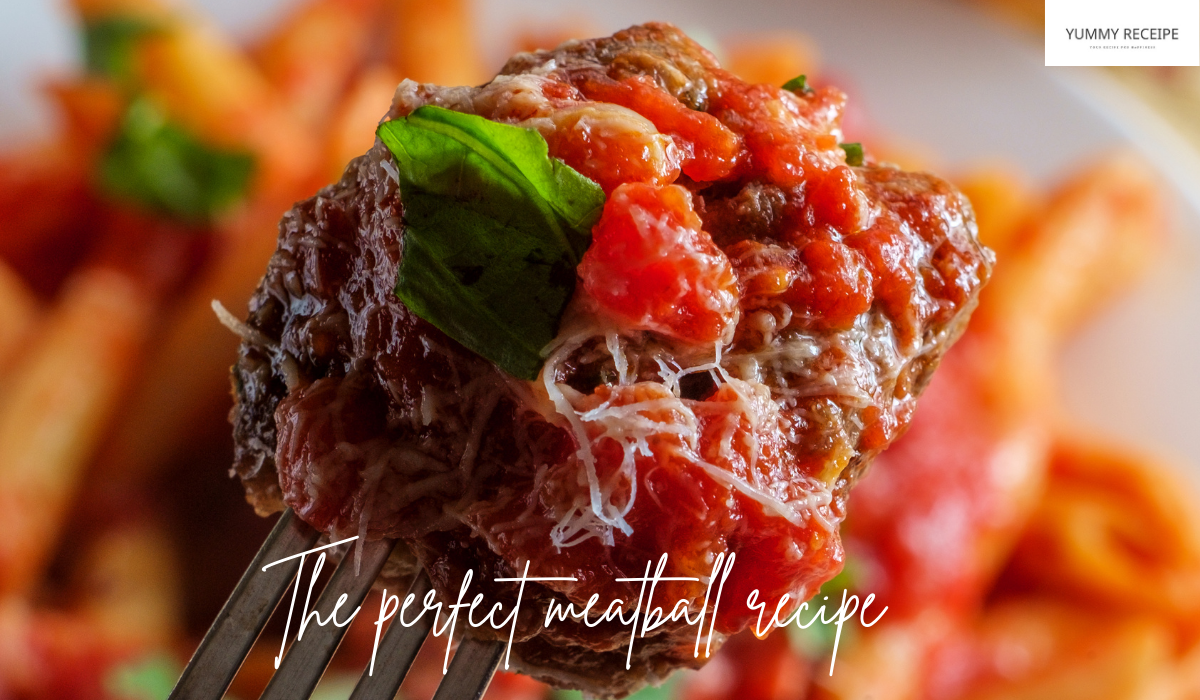The meatball recipe is one of the most famous recipes around the world. It is characterized by its ease of preparation and the ability to modify its ingredients to suit different tastes. It also contains many nutritional benefits and can be a complete meal that meets the body’s needs for essential nutrients. Here’s a perfect meatball recipe that guarantees you a perfect dish.
Benefits of the meatball recipe

The meatball recipe is a delicious dish rich in many health benefits. Here are the most important ones:
- Red meat is rich in iron, which is essential for improving energy levels and enhancing blood health. Additionally, vitamin B12 helps improve nervous system functions and supports the formation of red blood cells.
- Minced meat is an excellent source of protein, a vital element for building muscles, improving skin and hair health, and supporting the body’s growth and development. It also contributes to proper digestive functions, enhances bone health, and supports cellular signaling.
- Adding ingredients like parsles or minced spinach to the meatball mixture boosts the meal’s fiber and vitamin content, such as vitamins C and K.
- Adding breadcrumbs or oats increases healthy fibers and carbohydrates. If you add cheese, it provides calcium essential for bone health.
- Spices added to enhance the flavor, such as thyme, black pepper, and garlic, boost immunity and improve mood due to their health properties.
- Adding vegetables like tomatoes, bell peppers, or onions enhances the fiber and vitamin content of the dish.
- Meatballs are easy to chew and digest, making them an excellent option for children and older people.
- Serving meatballs with pasta or rice and sauce provides a complete meal containing proteins, carbohydrates, and healthy fats.
How to properly store meat?
Proper meat storage is crucial to maintaining its quality and nutritional safety. Here are the most important guidelines to help you handle and preserve meat:
- When buying meat, ensure it is fresh and from a trusted source. Ask the seller to wrap it well to ensure it is not exposed to air or contaminants.
- Always check the expiration or sell-by date to ensure freshness. Avoid buying meat that appears dark brown, has an unusual smell, or feels slippery or tough.
- After shopping, immediately place the meat in the refrigerator if you plan to use it within two days. The refrigerator temperature should be between 0-4°C to maintain freshness.
- Wash your hands thoroughly before and after handling raw meat or poultry to prevent bacterial contamination. Use separate cutting boards for meat and other ingredients to avoid cross-contamination, and ensure all tools and surfaces are cleaned after contact with raw meat.
- If you do not intend to use the meat within two days, freeze it. Divide the meat into small portions based on your needs, and wrap each portion in vacuum-sealed or freezer-safe bags.
- Label the meat with its type and freezing date.
- Use special food wrapping bags or aluminum foil, avoiding poor-quality plastic bags that may interact with the meat.
- Ensure the freezer and refrigerator are clean and odor-free. Regularly clean the shelves with a water and vinegar solution to maintain a safe storage environment.
- Place meat on its designated shelf in the refrigerator or freezer, away from vegetables and fruits, to avoid odor or liquid transfer, which may cause contamination.
- Do not store raw meat in the refrigerator for more than three days. If you wish to store it for a longer period, freeze it and ensure it is tightly wrapped in sealed containers before freezing to avoid freezer burn.
Additional storage ideas
Here are some additional storage ideas:
- Familiarize yourself with the safe storage times for different meat types. You can store cooked meats for 3-4 days in the refrigerator and 2-6 months in the freezer.
- You can store steaks or slices for 3-4 days in the refrigerator and 4-12 months in the freezer, while You can store ground meat for 1-2 days in the refrigerator and 3-4 months in the freezer.
- Transfer the meat from the freezer to the refrigerator a day before using it and allow it to thaw slowly. Avoid thawing meat at room temperature to prevent bacterial growth. You can use a microwave to defrost it quickly.
- Avoid refreezing thawed meat as it may affect its flavor, texture, and increase the risk of bacterial contamination.
- If storing meat in the freezer for an extended period, regularly check the freezing date to ensure it is used before its storage validity expires.
Meatball recipe
Ingredients
- 500 gram minced meat
- 1/2 cup grated Parmesan cheese
- 1 minced garlic clove
- 1 tsp salt
- 1/2 tsp black pepper
- 1 tsp chopped parsley
- 1 tsp dried thyme
- 2 cup tomato sauce
- 1 tsp olive oil
- A pinch of chili powder
- 1 tsp sugar
Instructions
- Mix the minced meat with breadcrumbs, egg, Parmesan cheese, garlic, parsley, thyme, salt, and black pepper. Combine the ingredients well until blended, then shape the mixture into small balls.Heat a large skillet over medium heat with a teaspoon of olive oil, and brown the meatballs on all sides for 5 minutes until golden.Add the tomato sauce, olive oil, sugar, and a pinch of chili powder to the same skillet. Let the sauce simmer gently for 10 minutes.Then, let the meatballs cook with the sauce over low heat for 15 minutes until fully cooked.
Notes

With this meatball recipe recipe, you can prepare delicious meatballs with a rich taste and perfect texture. Serve them to your family or friends as a delightful addition to your table.


